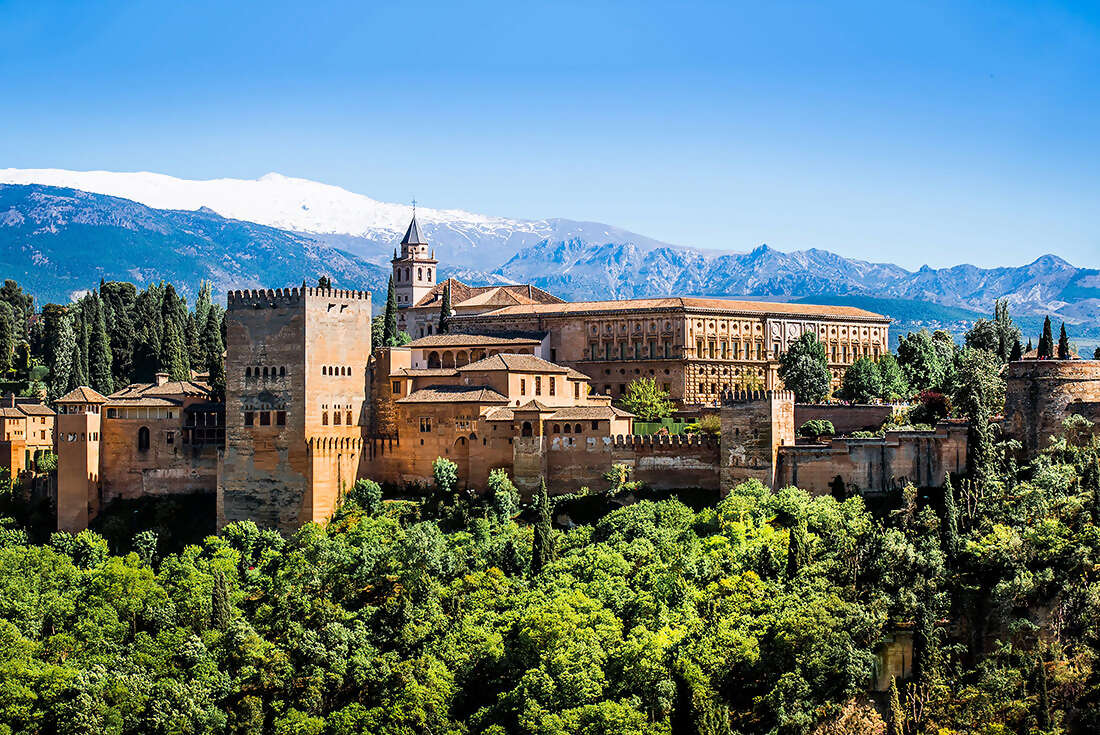 Viva Espana! The country that brought the world tapas and bull fighting has so much to offer outside its incredible cities. Ride through lush valleys, wide meadows and even abandoned tunnels on an adventure across southern Spain’s rich landscapes. Breeze through delightful white villages, dine on hearty Andalucian cuisine, marvel at centuries-old Moorish architecture, and luxuriate in car-free arterials on this classic European cycling adventure.
Viva Espana! The country that brought the world tapas and bull fighting has so much to offer outside its incredible cities. Ride through lush valleys, wide meadows and even abandoned tunnels on an adventure across southern Spain’s rich landscapes. Breeze through delightful white villages, dine on hearty Andalucian cuisine, marvel at centuries-old Moorish architecture, and luxuriate in car-free arterials on this classic European cycling adventure.Highlights
From fiestas to Flamenco, Manzanilla to tapas, alcazars to Alhambra—the very essence of Spain is found in Andalucia
Enjoy traditional pork sausages stuffed with eggs and chunky La Porra stew after a rewarding day in the saddle
Ride through the narrow, winding cobblestone streets of Andalucia's dramatic white villages – the likes of El Chorro and El Burgo
Discover Spain's intriguing history, from Seville's famed Alcazar to Granada's exquisite Alhambra
Relax and ride traffic-free on Spain's renowned Via Verde, abandoned railway lines turned cycling superhighways





- You will visit the following places:
-

Seville
Seville is the artistic, cultural, and financial capital of southern Spain. It is the capital of the autonomous community of Andalusia and of the province of Seville. It is situated on the plain of the River Guadalquivir, with an average elevation of 7 metres (23 ft) above sea level. The inhabitants of the city are known as sevillanos (feminine form: sevillanas) or hispalenses, following the Roman name of the city, Hispalis. The tapas scene is one of the main cultural attractions of the city: people go from one bar to another, enjoying small dishes called tapas (literally "lids" or "covers" in Spanish, referring to their probable origin as snacks served on small plates used to cover drinks). Local specialities include fried and grilled seafood (including squid, choco (cuttlefish), swordfish, marinated dogfish, and ortiguillas), grilled and stewed meat, spinach with chickpeas, Jamón ibérico, lamb kidneys in sherry sauce, snails, caldo de puchero, and gazpacho. A sandwich known as a serranito is the typical and popular version of fast food.
-

Grenada
Grenada is an island country consisting of Grenada itself and six smaller islands at the southern end of the Grenadines in the southeastern Caribbean Sea. The islands are of volcanic origin with extremely rich soil. Grenada's interior is very mountainous with Mount St. Catherine being the highest at 840 m (2,760 ft). Several small rivers with beautiful waterfalls flow into the sea from these mountains. It is also known as "Island of Spice" because of the production of nutmeg and mace crops of which it is one of the world's largest exporters.